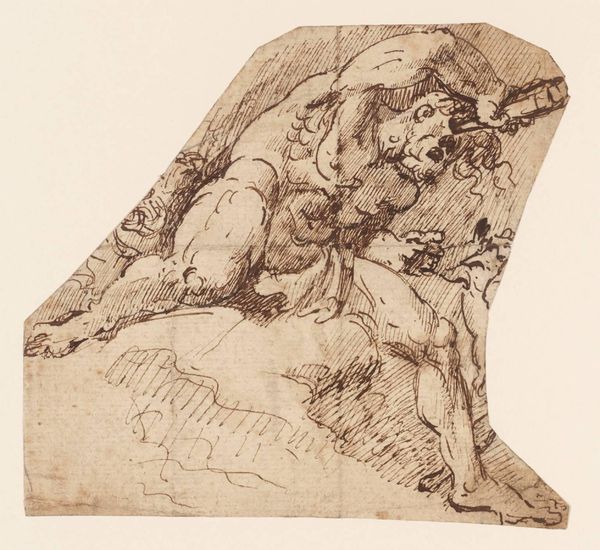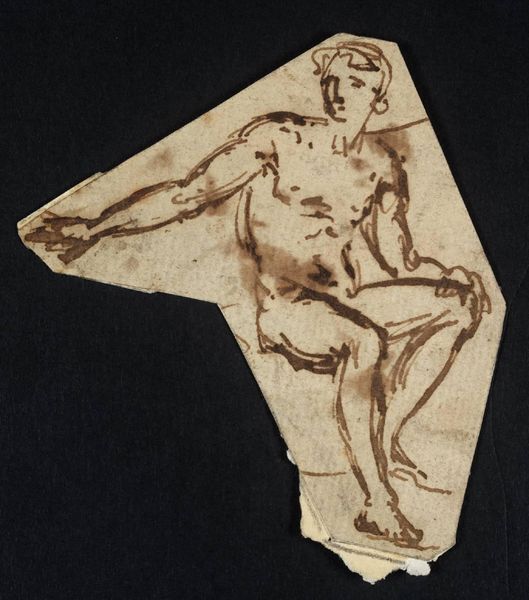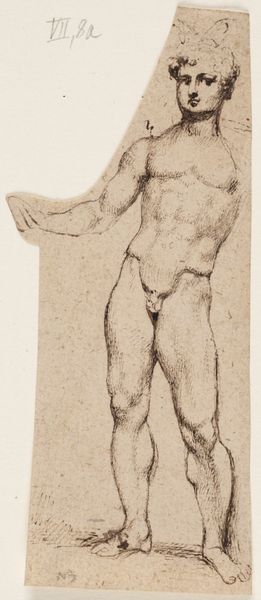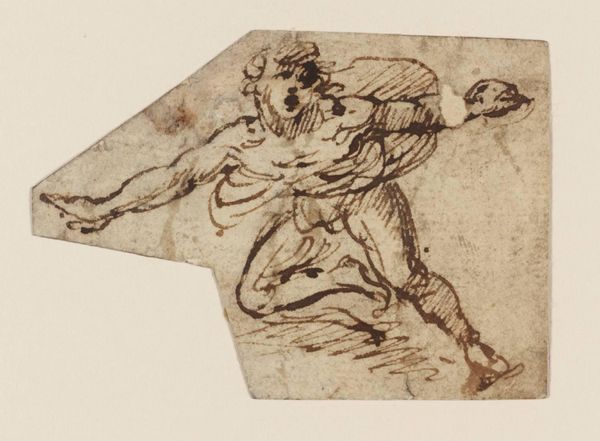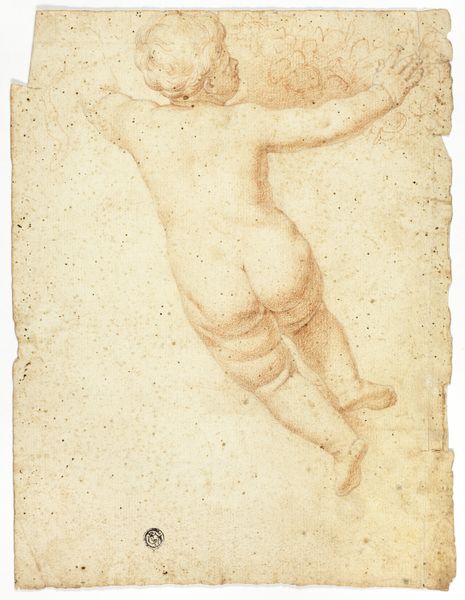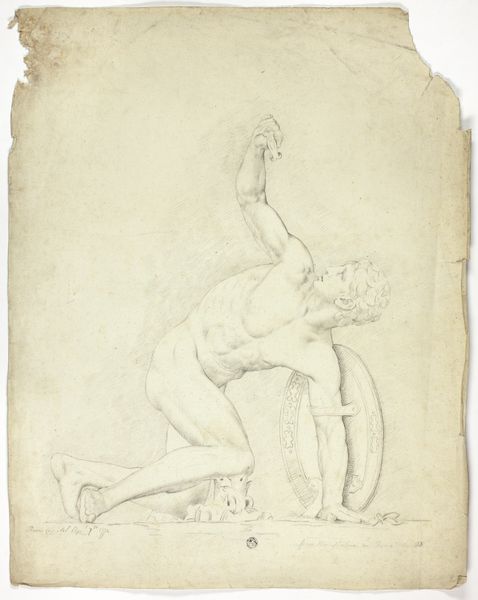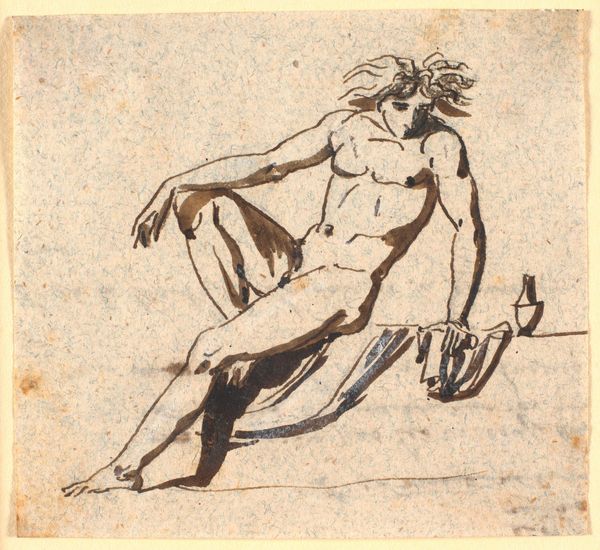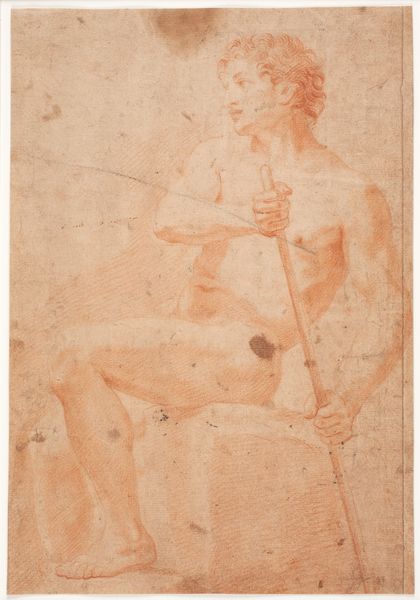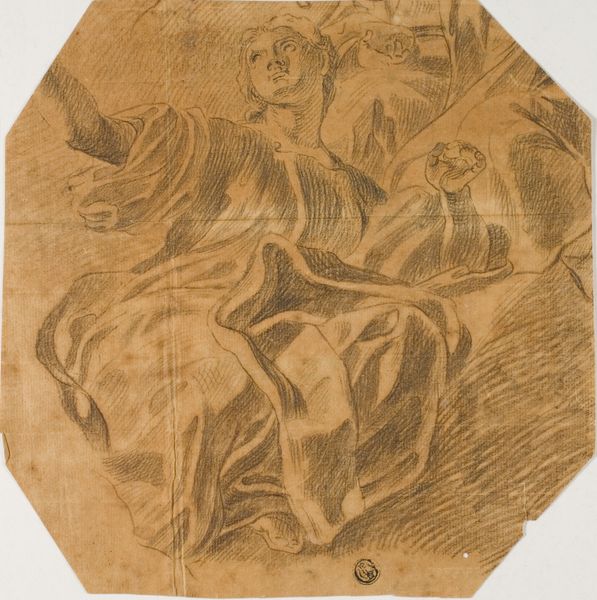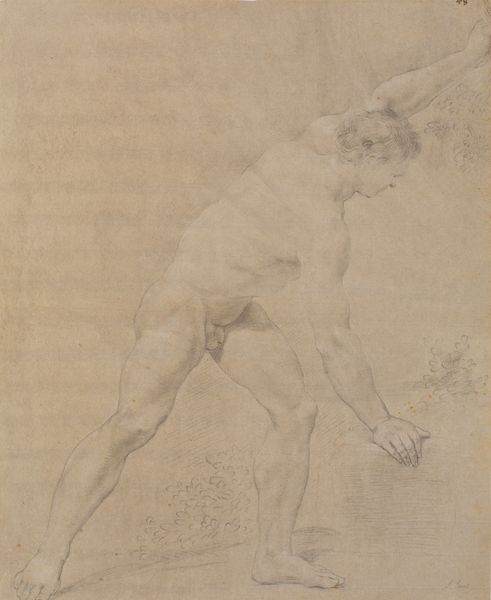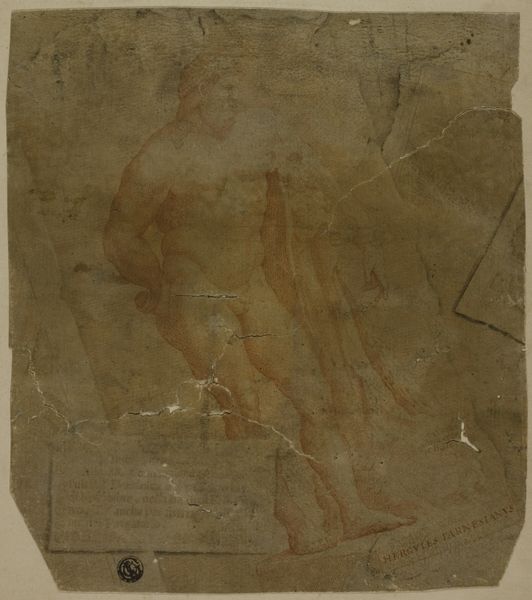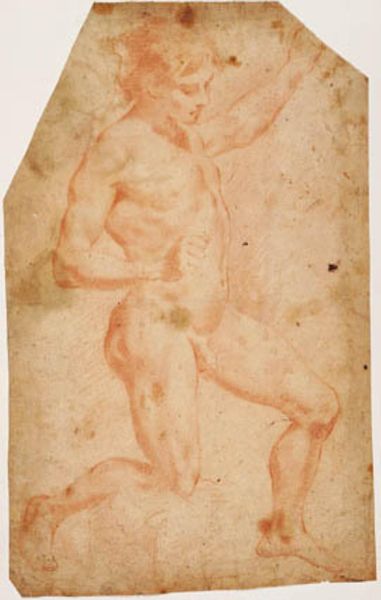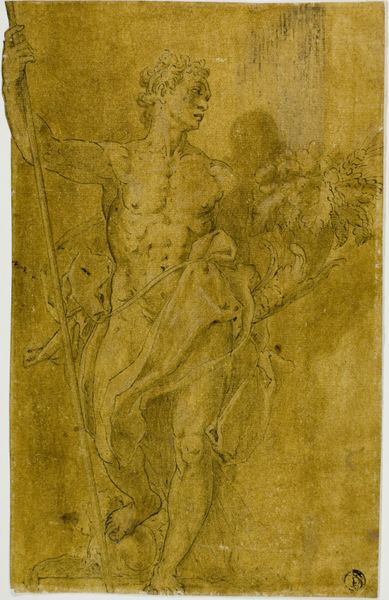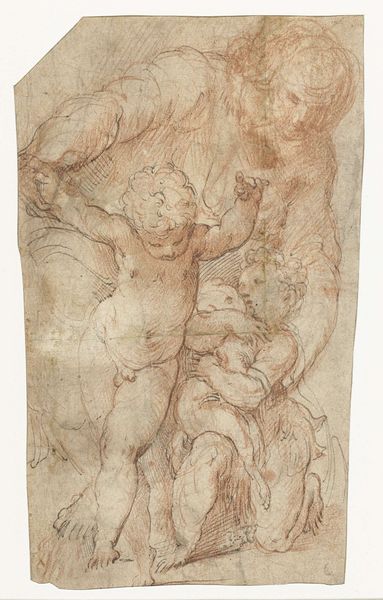
drawing, pencil
#
portrait
#
drawing
#
figuration
#
pencil
#
academic-art
Copyright: Public Domain: Artvee
Editor: Here we have Eugène Delacroix’s pencil drawing, *Allegory of Love; Infidelity*. It looks like a quick sketch of a female nude with an emphasis on her back and arm. There's also a separate foot study. The aged paper gives it a sense of fragility, doesn’t it? What do you see in this piece in terms of its cultural significance? Curator: Well, drawings like this reveal the academic practices that underpinned even Romanticism, to which Delacroix famously belonged. This wasn't radical at all. Consider the title – “Infidelity” – paired with this idealized nude. This isn't necessarily a personal expression, but rather engaging with longstanding traditions linking female nudity with concepts of vice. It reinforces societal expectations and judgments about women's behavior through artistic representation, doesn't it? How do you read the composition itself in light of that context? Editor: I suppose it’s interesting how detached the foot is – maybe suggesting a loss of solid ground or unstable footing? But how much were artists really thinking about these things in terms of actively promoting those societal judgements? Curator: It's complex. Artists operated within systems – the art market, patronage, the academy. The repetition of certain images reinforces the ideologies attached to them, even if the artist's personal intention is ambiguous. Are we comfortable overlooking the reproduction of those symbols just because it is “tradition?” This study is far from passive; it participates in the visual language available to the artist, and available for our deconstruction now. Editor: I see what you mean. It's more about the bigger picture, the visual culture being perpetuated. I will never see drawings like this again! Thank you. Curator: Precisely! It’s crucial to consider these factors when looking at art across historical periods, right? It reframes how we perceive art's role in society.
Comments
No comments
Be the first to comment and join the conversation on the ultimate creative platform.
